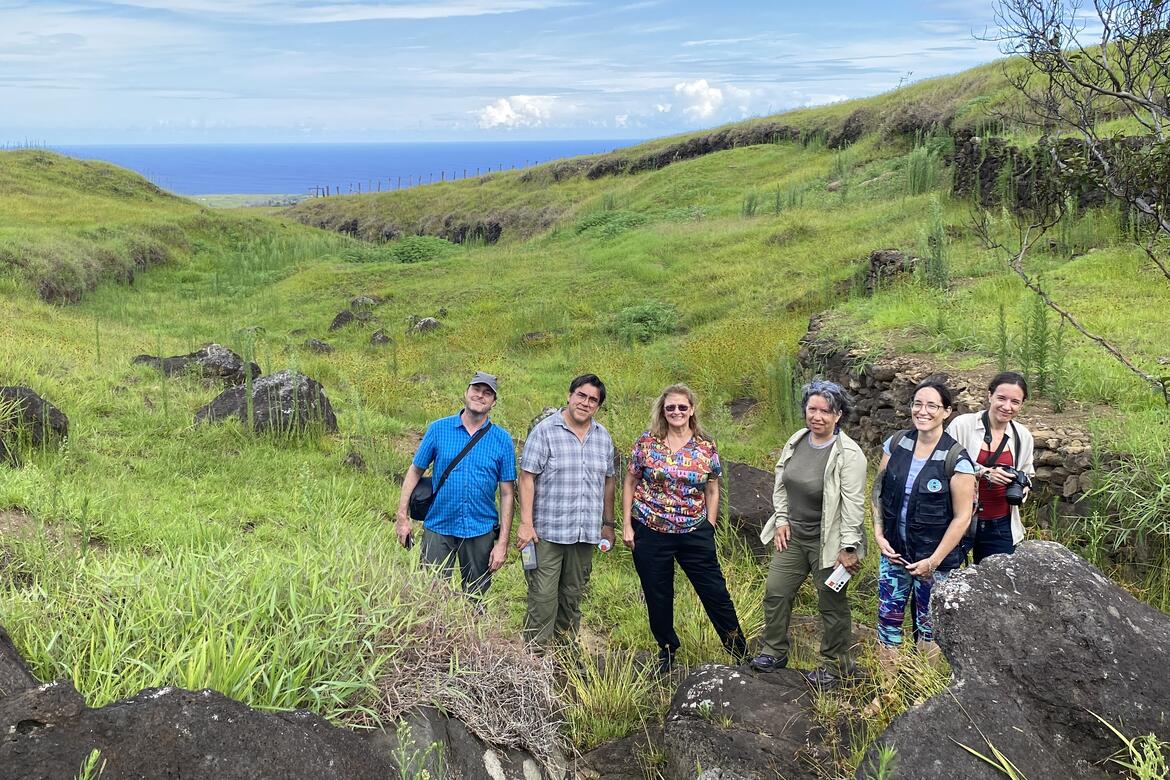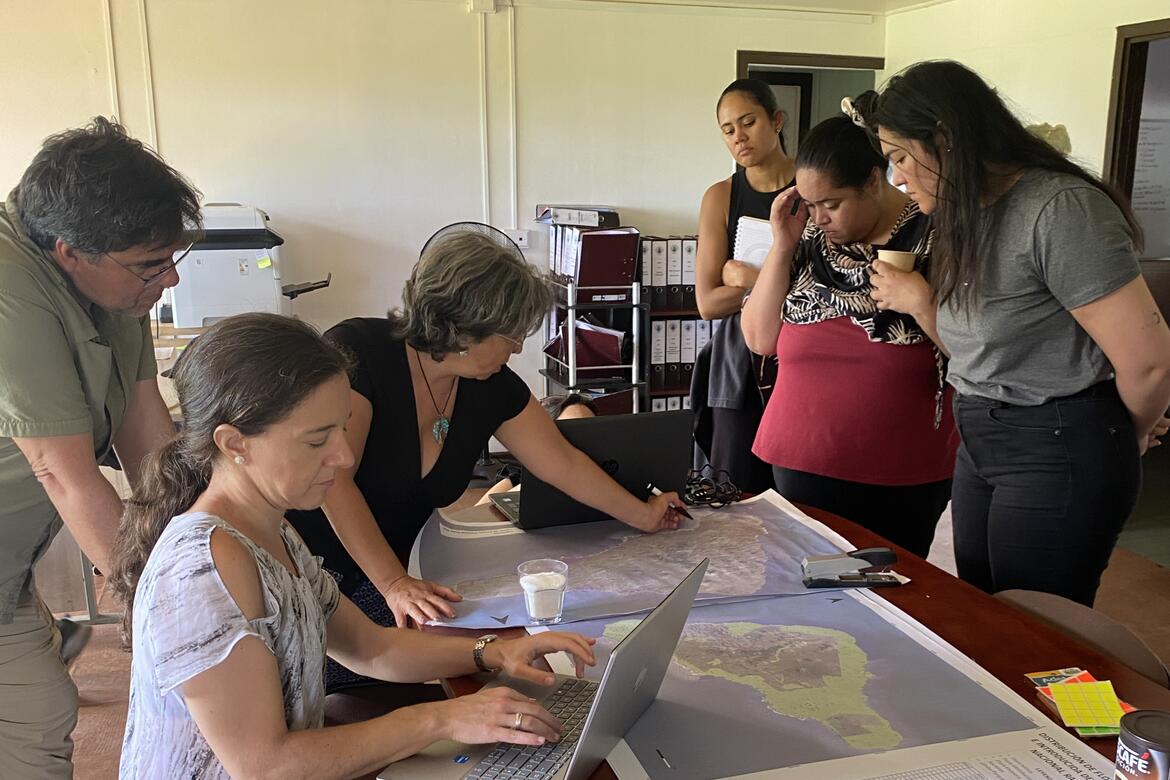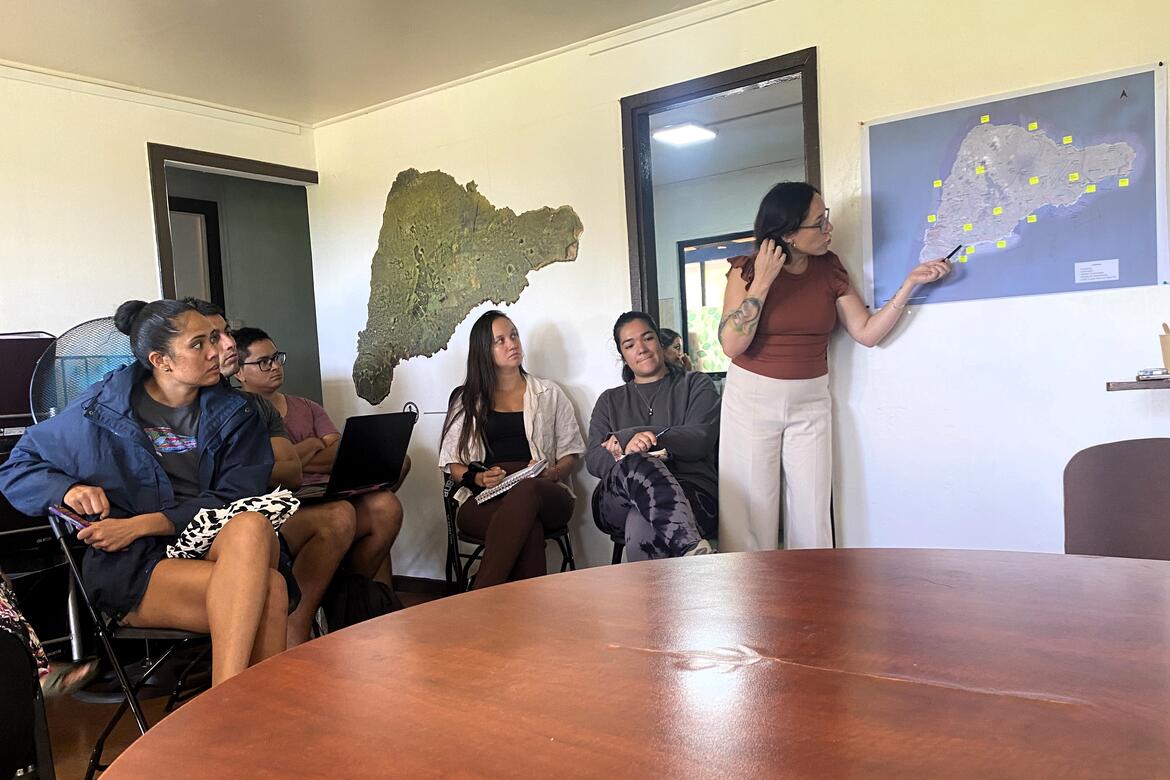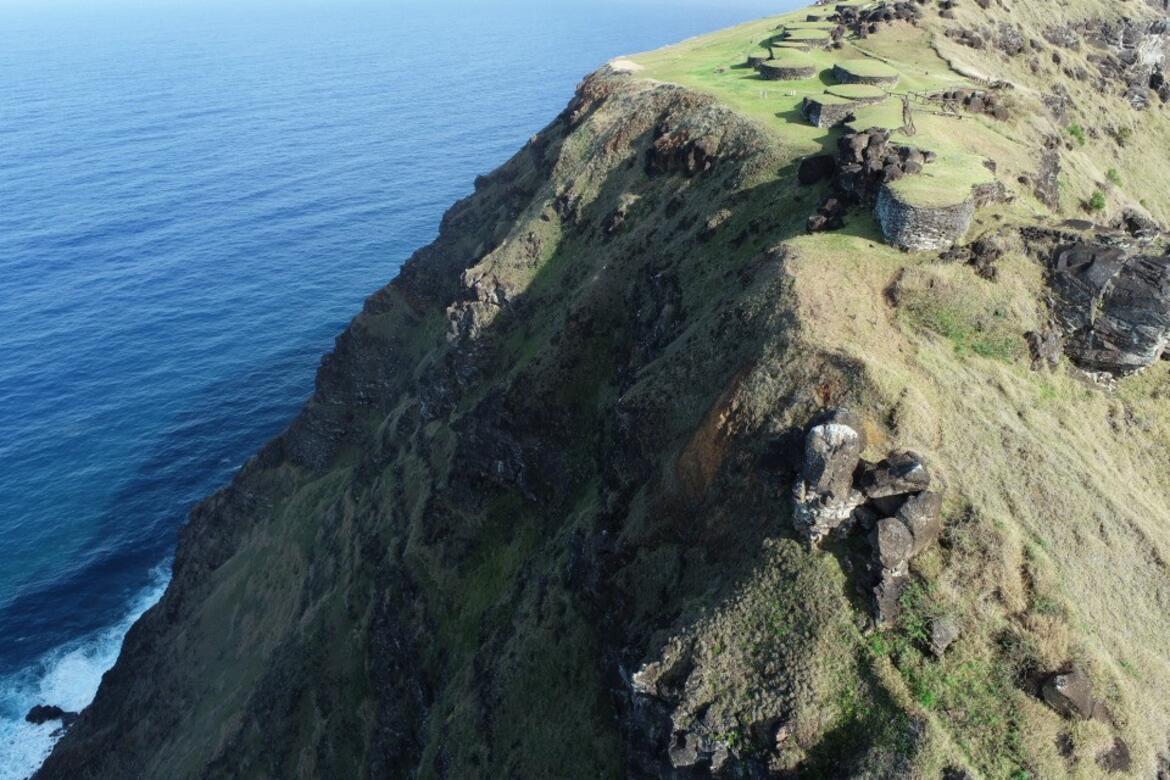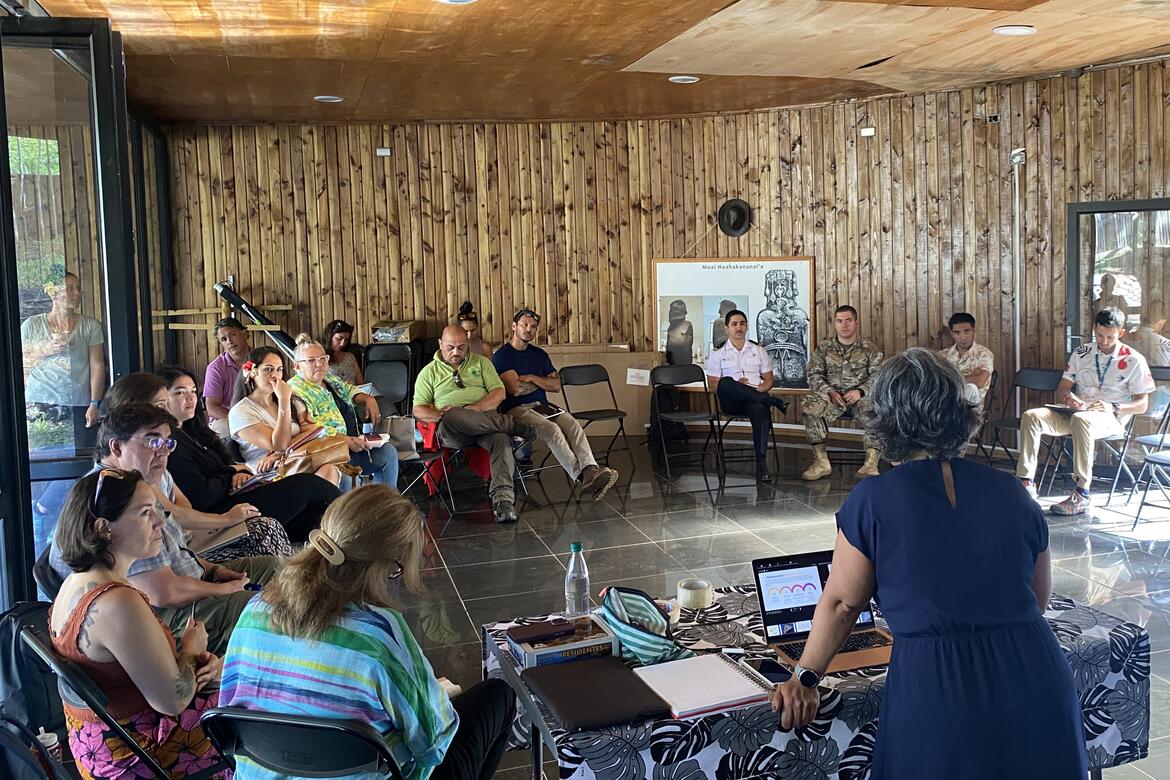Historic Conversations: A Rapa Nui Travelogue
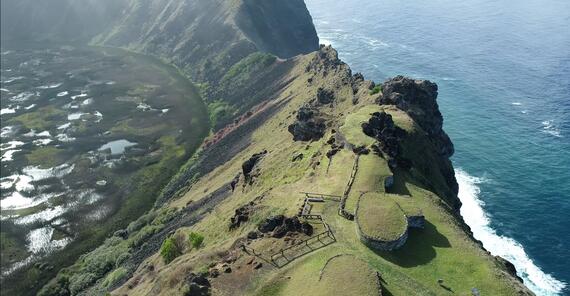
World Monuments Fund’s (WMF) support for Rapa Nui began with our founder. In 1967, Colonel James A. Gray, traveled to Easter Island (as it is also known) and concluded that the world needed to know about the unique heritage of the Rapanui culture. With permission from the president of Chile and assistance from the Chilean navy and archaeologist William Mulloy, an eight-foot-tall moai head was transported to the USA. It was displayed in front of the Seagram Building in New York City and later traveled to the Pan American Union in Washington, D.C. before returning home.
Since that time, we’ve remained committed to protecting the heritage of Rapa Nui, with work spanning 57 years and nearly 20 conservation campaigns across the island. Rapa Nui National Park was most recently included on the 2020 World Monuments Watch, when it was nominated by archaeologist Daniela Meza Marchant and the Ma'u Henua Indigenous Group, who officially took over the administration of the park in 2017. The community was particularly concerned about the future of Mata Ngarahu, an outcrop of basalt boulders on the cliffside of the Ceremonial Village of Orongo whose petroglyphs are a record of the Tangata Manu (or Birdman) cult that succeeded the cult of the moai. Continuous exposure to the elements puts the boulders and their carvings at severe risk—yet the variability of the cliff's geology (imagine a millefeuille or something akin to a game of Jenga) itself means that moving the boulders could destabilize the whole area. Meanwhile, the unpredictability of gale conditions make interventions extremely dangerous. Responding to these concerns, we’ve been collaborating with Ma’u Henua since 2021.
I have had the immense privilege of traveling to Rapa Nui on two occasions, most recently in March of 2024. Building on my earlier trip in 2022—when WMF hired experts from Arup to assess the site’s conditions before presenting potential courses of action to the local community—I returned to the island this year as part of the third phase of our project.
WMF is currently working with an expert team from Ámbito Consultores—many of whom have previous direct experience working on Rapa Nui—to develop an implementation plan for mitigation and stabilization measures at Mata Ngarahu. The team is also helping Ma'u Henua create a risk and emergency management plan for the entire park, following an earlier fire risk plan drafted by UNESCO for the volcanic crater of Rano Raraku. Importantly, our goal is not to dictate the best approach. Instead, we're facilitating a discussion process and articulating the threats and potential solutions various people have identified. The plan aims to be a tool for Ma’u Henua's effective management of the park. We held a workshop for the Emergency Committee for Disaster Response, bringing together representatives from the fire brigade, the National Forestry Corporation, the local hospital, the Municipality, and others to coordinate disaster response. These institutions have been working separately for a long time, and a big part of our mission is creating space for collaboration. It felt to me that the candid discussions during the workshop—dubbed a “historic conversation” by some of the participants—were an important step in the right direction.
The unique heritage of Rapa Nui continues to fascinate people all over the world. But the sheer number of heritage assets that are continuously exposed to shifting climatic conditions is a constant challenge. For the first time in Rapa Nui’s history, there is a team of capable young local professionals solely dedicated to the protection and conservation of the park—a rare occurrence at any World Heritage site! We look forward to continuing our partnership with Ma'u Henua to help strengthen their ability to conserve and manage their unique heritage.
World Monuments Fund’s work at Rapa Nui has been made possible, in part, by support from The Robert W. Wilson Charitable Trust, American Express, and The Selz Foundation.
Support Our Work at Rapa Nui
Our work continues today thanks to the help of individuals like you. Use the link below to direct your gift to WMF’s next stage of work at this irreplaceable site of shared heritage.


